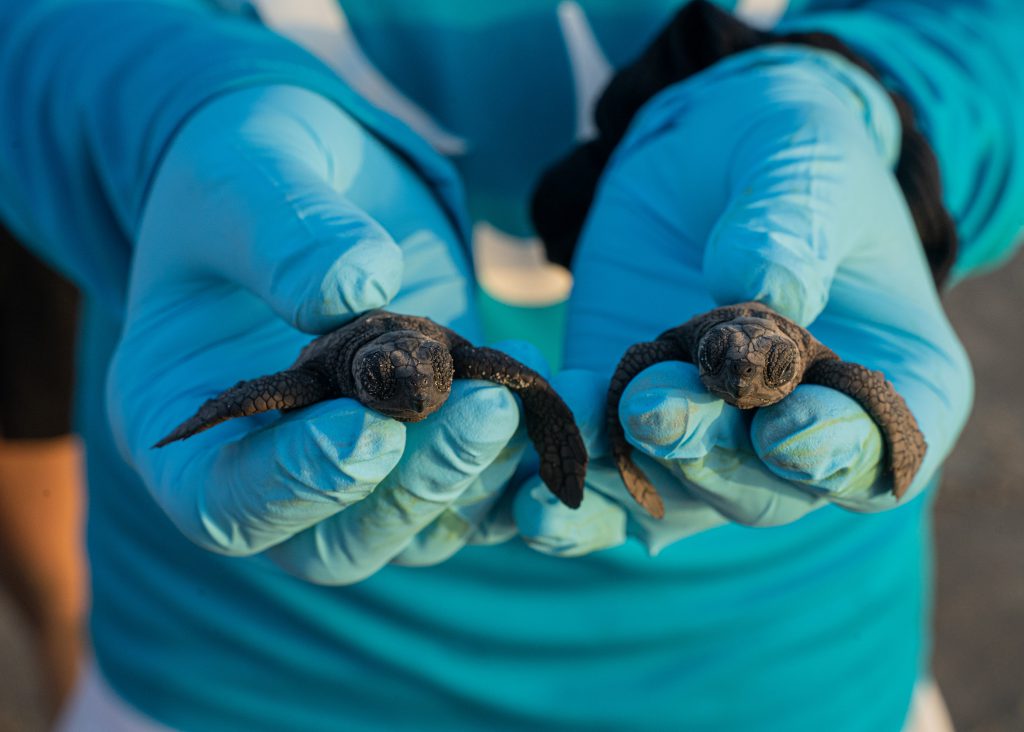Nest Conservation Program
Every year, multiple species of sea turtles come ashore to lay eggs on the beaches of South Padre Island and Boca Chica Beach. The most common nesting female we encounter is the Kemp’s ridley sea turtle (Lepidochelys kempii). The Kemp’s ridley is critically endangered due to decades of egg harvesting in their primary nesting grounds of Rancho Nuevo, Tamaulipas, Mexico, and mortality related to shrimp fisheries before the implementation of Turtle Excluder Devices (TED). Today, there are multiple government agencies and non-profit organizations in both Mexico and the United States working towards saving this critically endangered species of sea turtle.
If we encounter a nesting female, we carefully tag the turtle, take a biopsy sample, and collect morphometric data as a part of collaborative studies. Once the nesting female is safely back in the water, we excavate her eggs and relocate them to a hatchery for safe incubation. After a period of 45 to 55 days, hatchlings emerge from the nest cavities and we safely release them to the Gulf of Mexico under moonlight and away from city lights. When conditions allow, we hold public hatchling releases.
Watch as Chief Conservation Officer, Dr. Amy Bonka explains our crucial role in nesting season on South Padre Island.
Contribute to sea turtle conservation on South Padre Island
We manage Kemp’s ridley sea turtle nest conservation for the U.S. Fish & Wildlife Service. Each summer, we patrol a 50-mile stretch of the island and Boca Chica beach for nesting sea turtles and relocate the nests to a protective corral. The hatchlings are protected from high tide, predators, and vehicle traffic while incubating in the corral. They are released into the ocean as soon as they hatch.
By adopting a nest you’re helping secure a future for sea turtles in South Texas. Your adoption funds our sea turtle patrols and nesting program. Find out more about nest adoption by clicking the button below.

Marine Debris Survey
Additionally, we monitor 8 monofilament line collection stations on the island and are currently looking to expand the number of collection sites. In the last collection we gathered nearly 8 kgs of line and rubbish from the collection stations!

